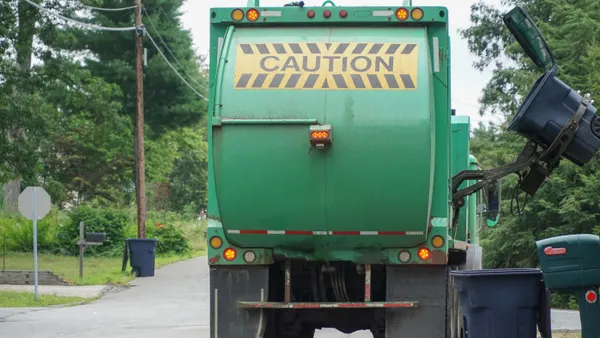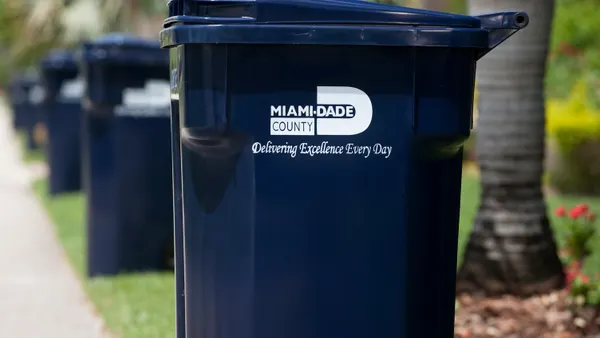The U.S. EPA and environmental groups led by East Yard Communities for Environmental Justice agreed to delay a final update to air pollution regulations for large municipal combustors until Dec. 22, 2025, the latest in a series of delays in a rule that environmental advocates say is more than a decade overdue.
It’s one of three decisions made in recent weeks affecting owners of facilities that burn various forms of waste.
Besides the latest consent decree, the EPA also released overdue federal rules for commercial and industrial solid waste incineration rules, the first update for some facilities since 2000. And a U.S. District Court for the District of Columbia judge ruled on Dec. 12 that EPA must update its hazardous waste combustor rules by the end of next year, a timeline much shorter than the 37 months the agency initially requested but longer than what a coalition of environmental groups sought in a lawsuit.
All three updates, which each pertain to air pollution regulations for separate categories of incineration or combustion facilities, were spurred by lawsuits from environmental groups seeking long overdue updates.
The EPA first issued its draft large municipal waste combustor rule language in January. The update stems from a lawsuit filed in 2022, in which environmental groups noted that air pollution guidelines for the category of facilities had been due since 2011.
The parties initially agreed that EPA would issue a proposed update to the rules by the end of 2023 and would finalize them by Nov. 30. They more recently agreed to an extension on that final deadline, pushing it back to Dec. 20, according to an EPA spokesperson.
That will leave at least two decisions over incineration facilities to the Trump administration.
Lawyers with Earthjustice, which represented groups like East Yard Communities for Environmental Justice in the lawsuit, did not respond to a request for comment on the extension.
Owners of waste-to-energy facilities that must comply with the rule were already unhappy with the proposed language in January. At a conference in October, Tim Porter, director of air quality management at Win Waste Innovations, said industry members would likely sue the EPA over the process it’s using to determine the final rule.
Porter said industry members filed Freedom of Information Act requests seeking to understand the underlying data EPA used to develop its most recent regulation; those were later denied. Industry groups were also denied a 30-day extension to submit comments on the proposed rulemaking this year, he noted.
"We got nothing. We got crickets," Porter said at the Waste-to-Energy Resource and Technology Council's biennial conference. "You're asking us for [comments] and we got nothing."
While there are roughly 70 large municipal waste combustors in the country, there are likely more than 200 commercial and industrial solid waste incinerators, according to Marco Castaldi, a professor and director of City College of New York's Earth Engineering Center. His center ran the October conference.
The EPA’s federal plan for commercial and industrial solid waste incinerators was first proposed in 2017 but is only now getting finalized. The Sierra Club said in its lawsuit over the rules that in certain states, facilities covered under the regulations haven’t seen an update since 2000.
Meanwhile, the EPA last updated its air pollution regulations for hazardous waste combustors in 2008, lawyers for Earthjustice said in their lawsuit over the facilities.
They had initially hoped EPA would update the regulations for hazardous waste combustors by July 31. They called the agency’s requests to delay the rulemaking unnecessary and based on “convenient and self-serving claims about how long it thinks rulemakings take in general.”
The EPA, for its part, claimed that it needed the extra time to begin collecting emissions data on poly-chlorinated biphenyls, a class of pollutant it had not previously regulated. Earthjustice argued that belatedly deciding to regulate PCBs was a welcome decision, but shouldn’t hold back EPA from its overdue update for other types of air pollutants. A judge ultimately agreed.
In a year in which the EPA made halting progress on its rules, few are happy about the agency’s actions, let alone its communication.
"There's definitely a lot of stuff that they're doing … that's kind of off the wall," said Mike Ewall, founder and director of the Energy Justice Network. "We're looking at it, scratching our heads, saying, 'That's not even responsive to what we're asking for. I don't know where that came from.' So yeah, there's a lot of things where they should be more transparent."



















